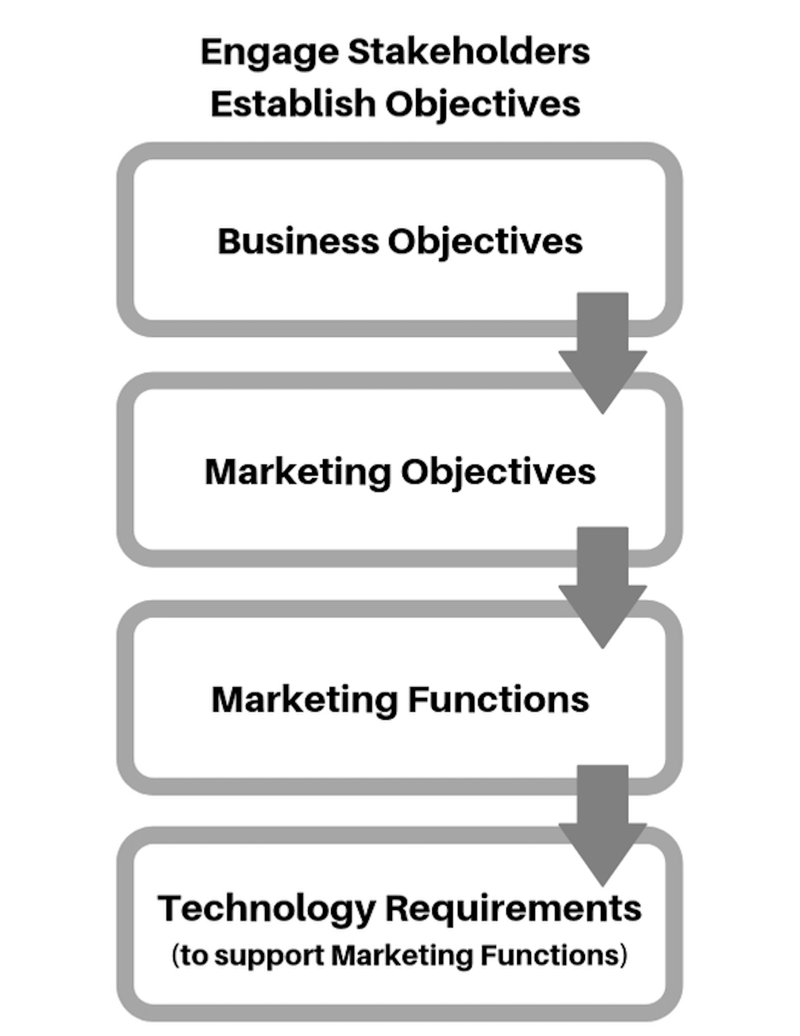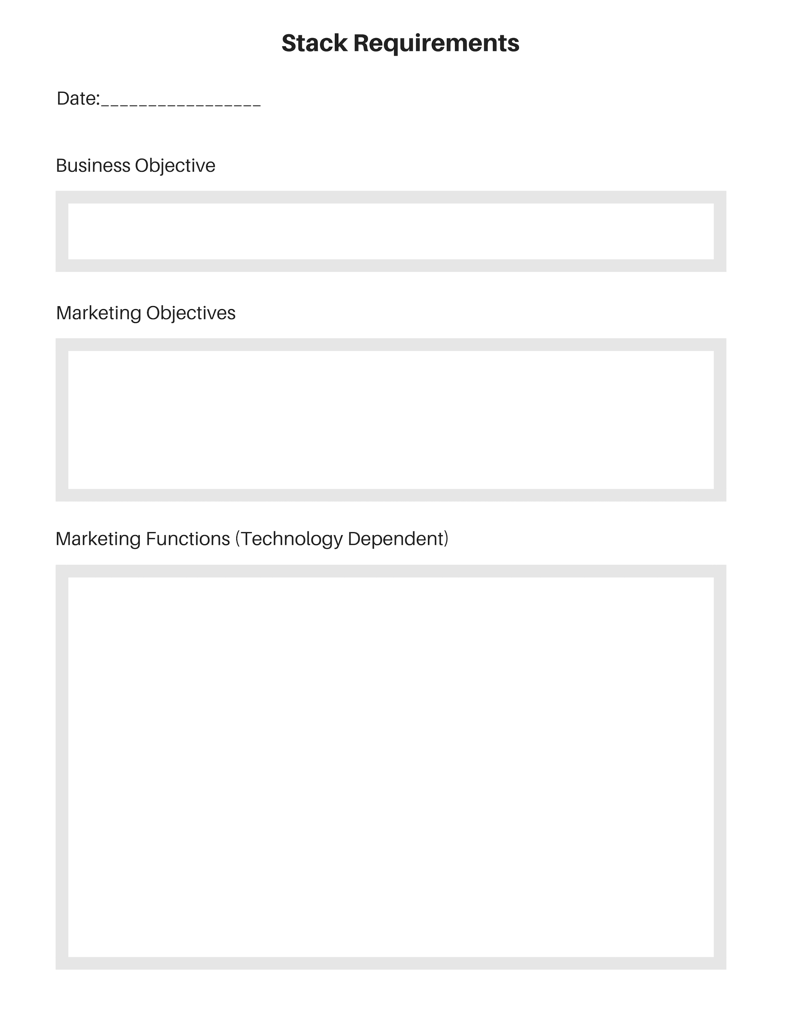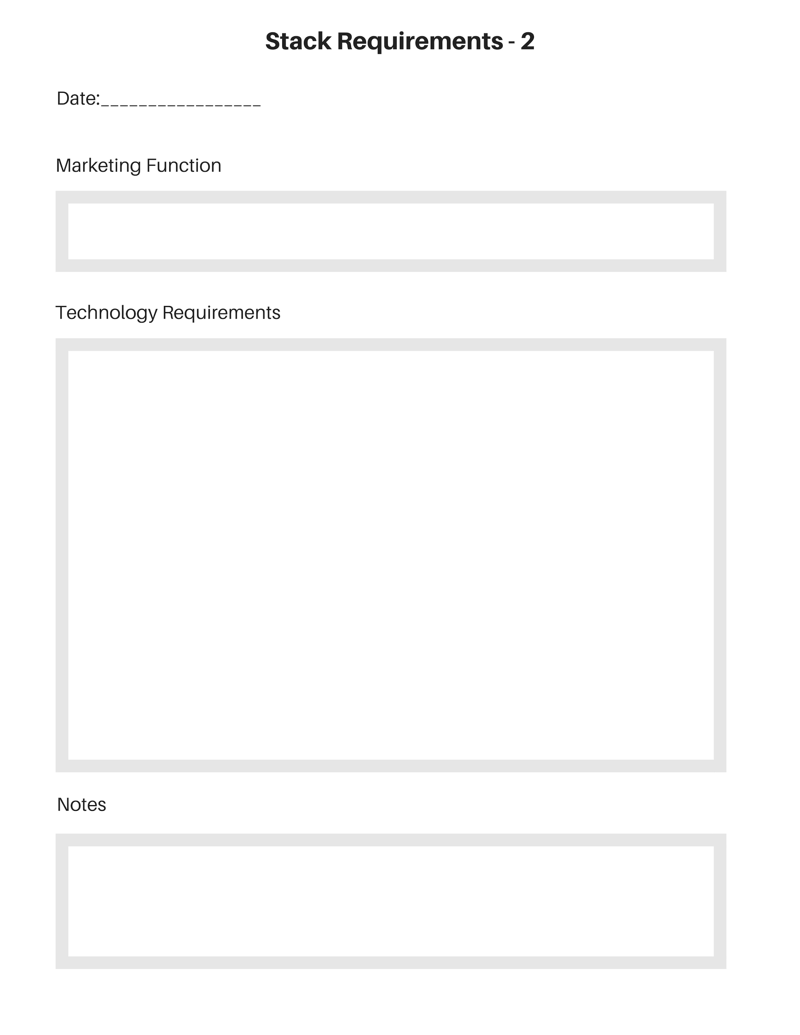It’s not unusual for organizations, in response to internal pressure, jump right to “we need an XYZ platform” instead of taking the time to establish marketing objectives and technology requirements. Unfortunately, without doing the work to map requirements against business objectives leads to a bloated technology stack with overlapping functionality, poor utilization of the platforms in place, and increased cost
As you begin to think about your stack strategy and plan, start by identifying the business and marketing objectives that you are trying to achieve, and then define and map the marketing functions that will need to be supported by technology for each objective.
For example:
Business objective: Reduce costs
Marketing objective: Reduce the cost of customer acquisition
Marketing function (technology-driven): Measure marketing technology effectiveness
With your marketing functions defined, the next step is to define the target and purpose of each function. This begins to create a framework that can be used to help identify tool requirements and the teams responsible for managing them.
Some examples:
Generating an objective-driven technology requirements framework adds value throughout the many stages of auditing, building, and maintaining a MarTech stack. During the stack audit, this framework can be used to organize findings, identify teams to interview, and formulate questions to ask to uncover all of the technology currently in use (technology sometimes hides . . .). When audits are complete, having a finished framework makes it easy to pinpoint functions that are not currently supported by existing tools and to identify areas of over-investment.
With an initial framework in hand, you can drill down to identify the specific technology requirements needed to serve each business function. Notice I am referring to functionality. Many of us naturally jump straight to defining a platform requirement (e.g., “I need a CRM system”) because it feels concrete. The problem with this is that it discourages you from looking at the functionality that you already have within your stack to see if you can cover your technology requirements with your existing set of tools. And, if you do need to bring in an additional tool, it narrows down the selection too quickly by biasing you to one type of tool, when in fact a different type of tool may be able to deliver more functionality.
Here’s an example of the kinds of business and marketing objectives you might first identify, followed by the types of technology requirements that you might then pinpoint in finalizing a technology requirements framework that serves your business functions:
Business objective: Increase revenue and reduce costs
Marketing objective: Improve campaign return on investment
Marketing function:Develop a sound attribution strategy that allows our team to make better investments based on past campaign performance
Technology requirements:
Two important things to consider as you build your technology requirements framework:
1. Ask yourself: “How well does the company need to perform each function?” Do you need to perform at a “world-class” level in every function, or in just a few? There is always more work to do than time or resources allow; this relatively simple exercise will help with the prioritization of work and tool investments.
2. In defining the technical requirements needed to support each function, it is important to identify the data that will be needed, where it will come from, and what processing will need to be done in order for it to deliver the desired results. Skipping this step can lead to disappointing performance.
Having a well-defined requirements framework will make it much easier to assess your existing marketing technology stack and to determine what else is needed to complete it.


